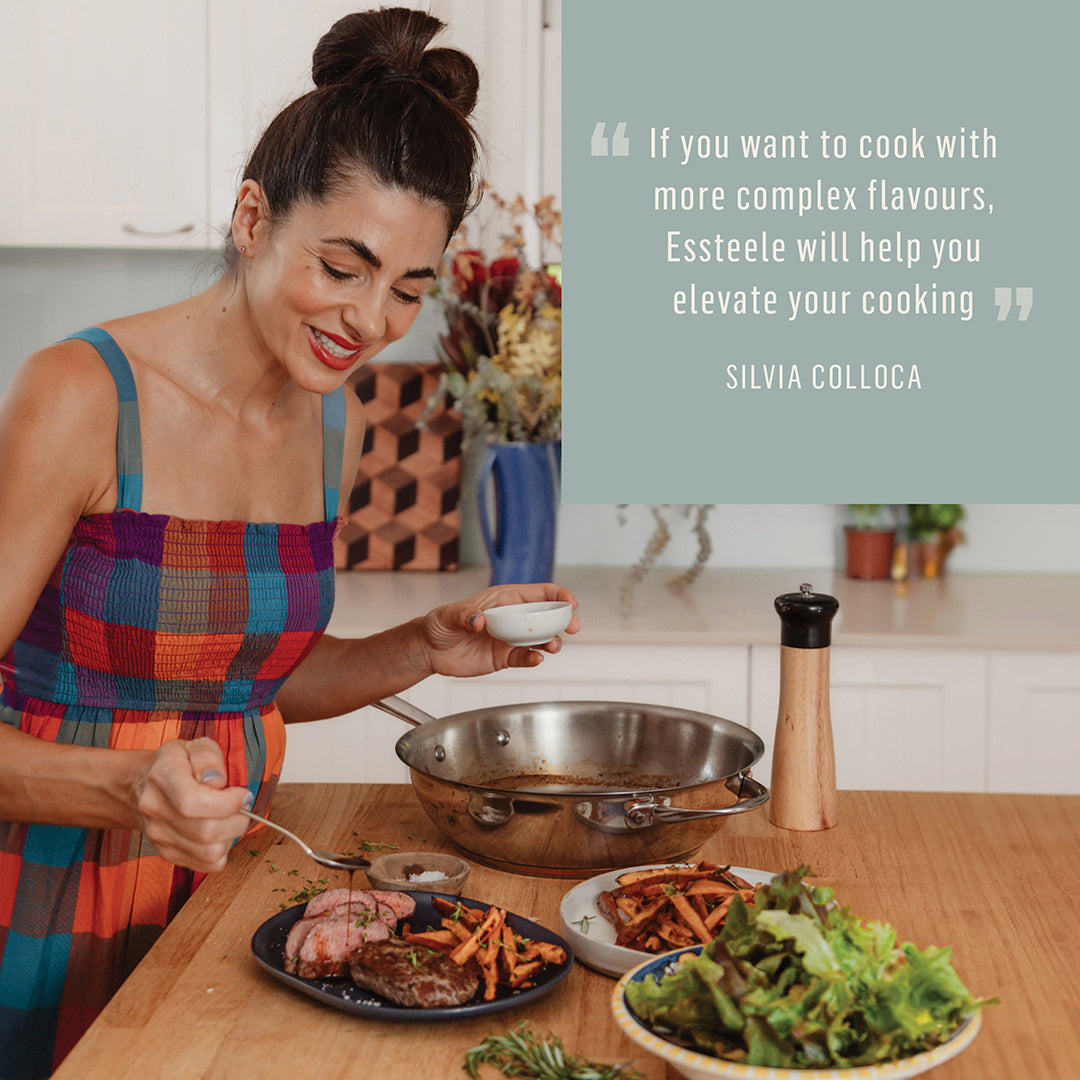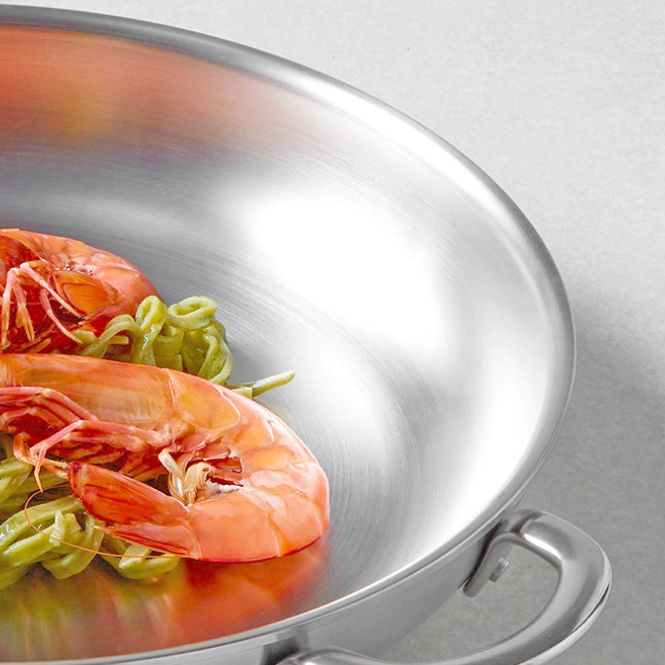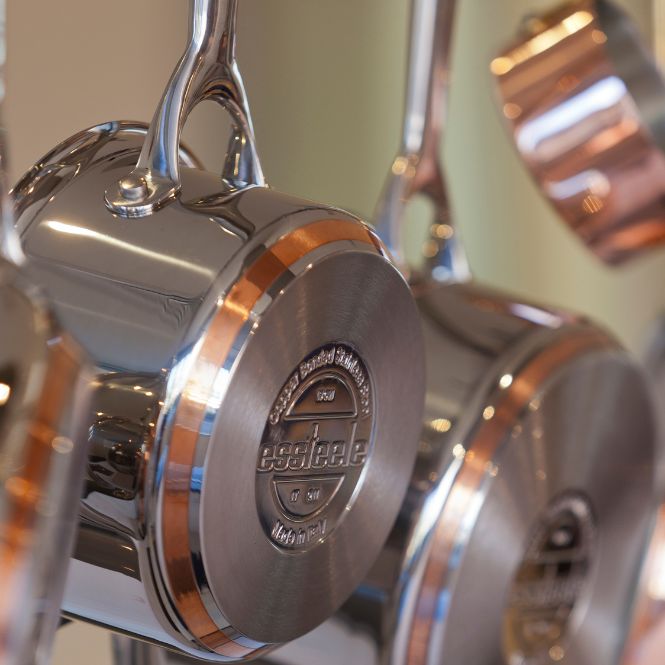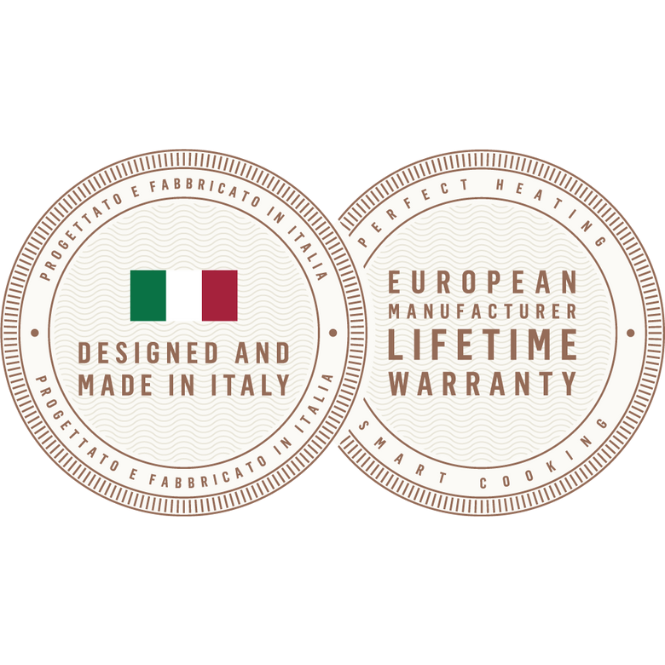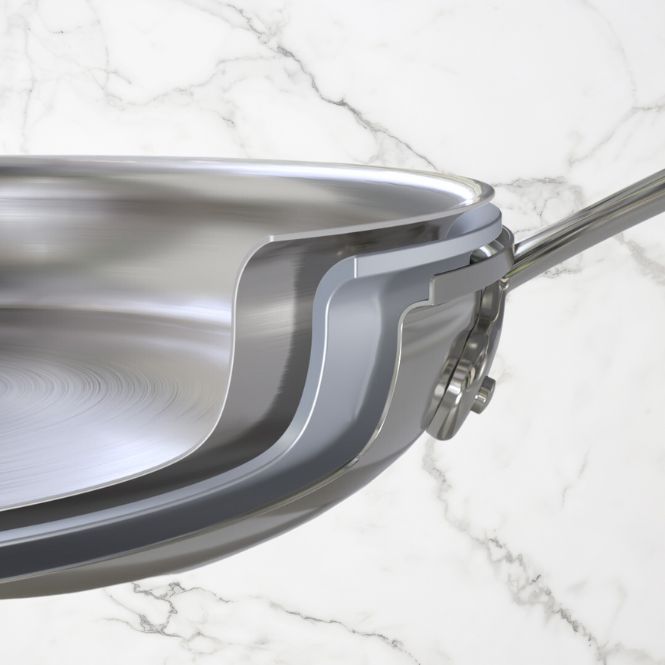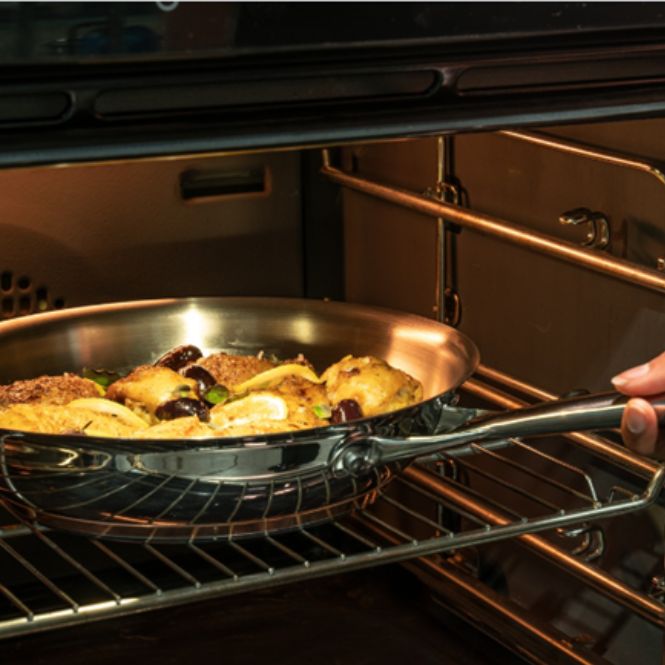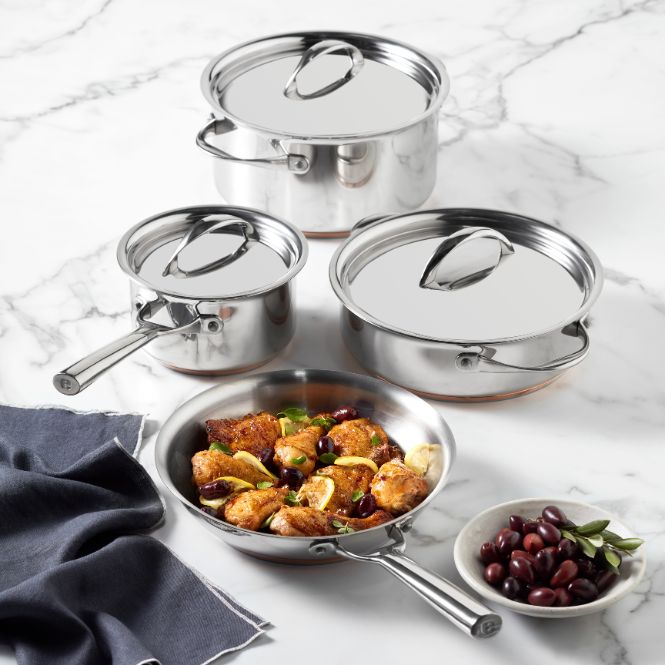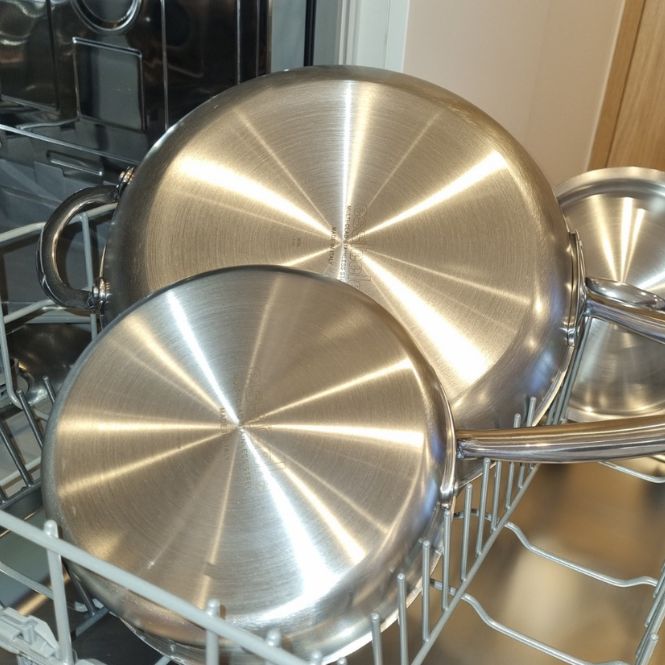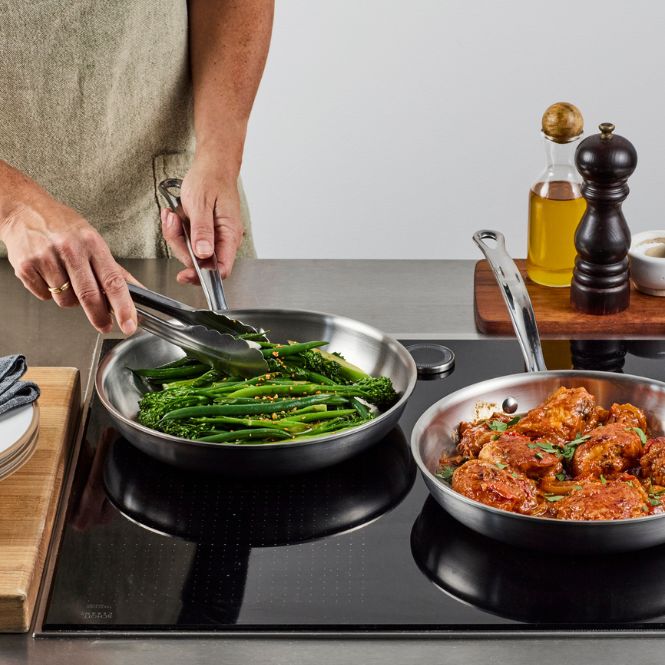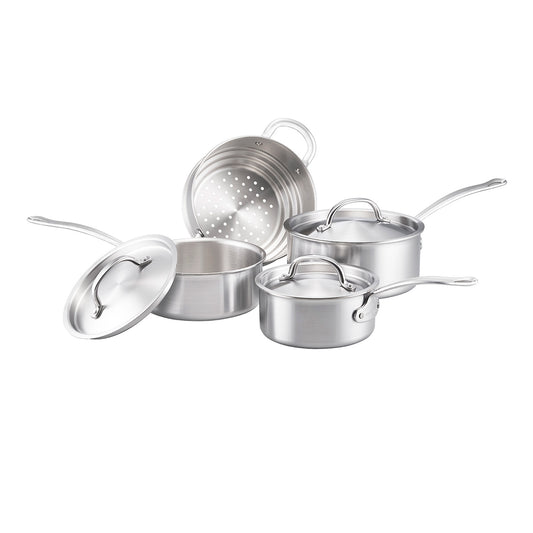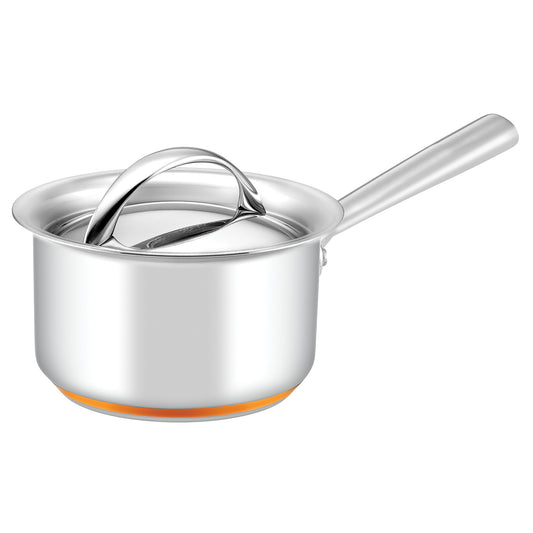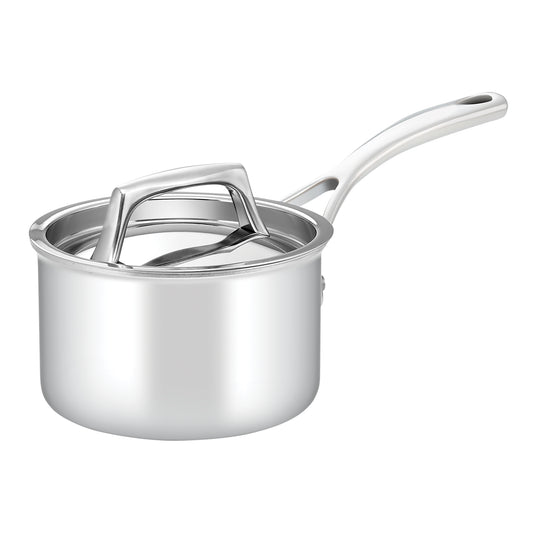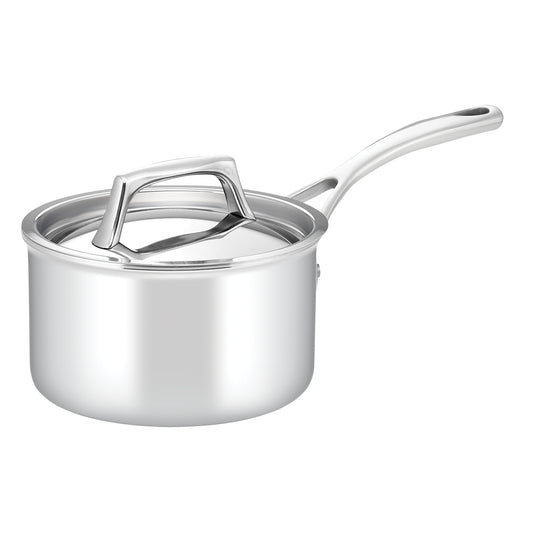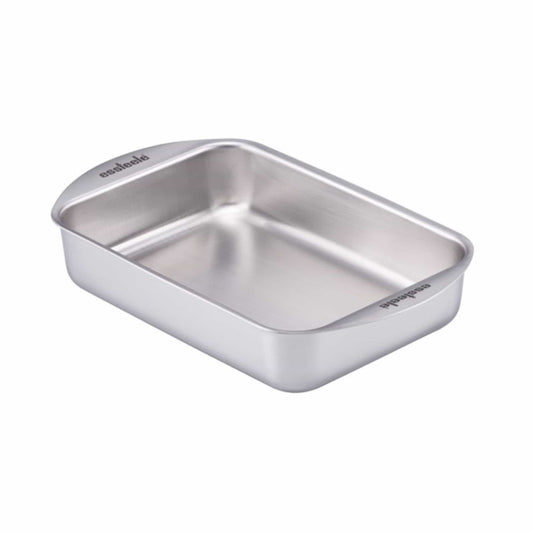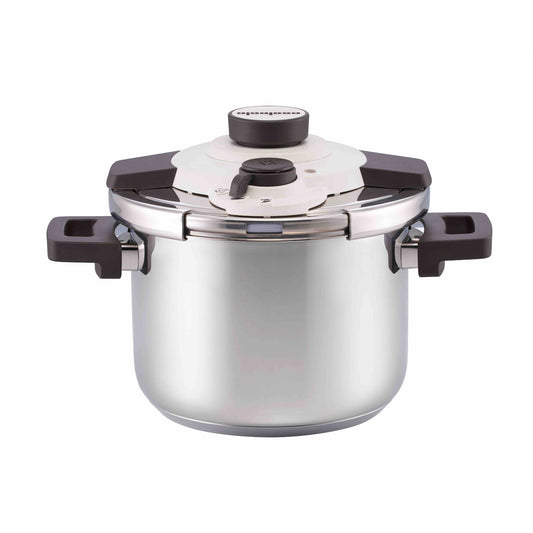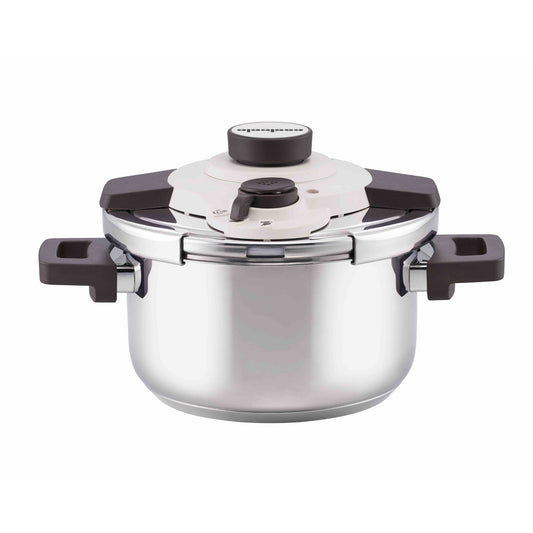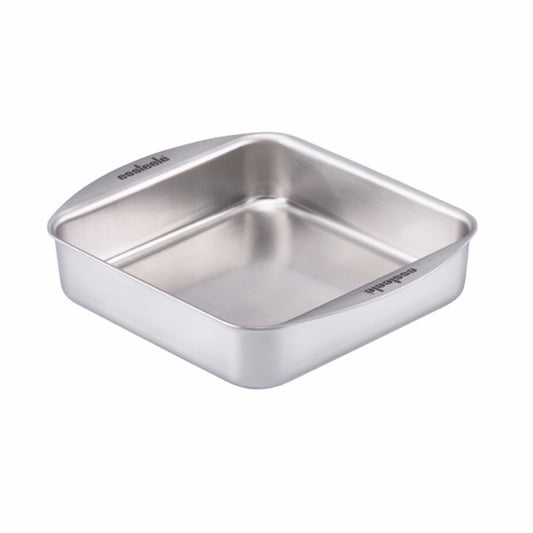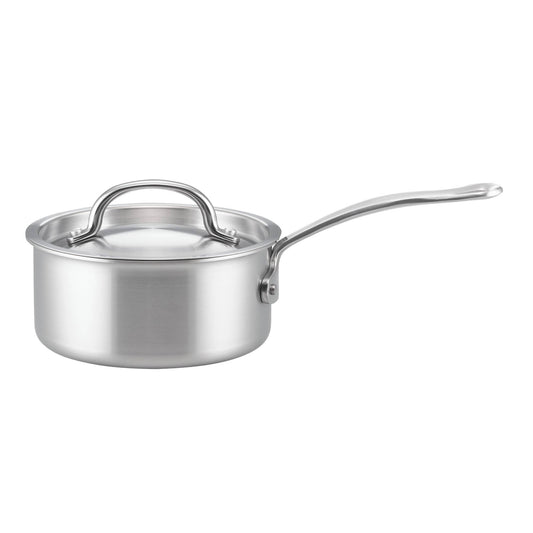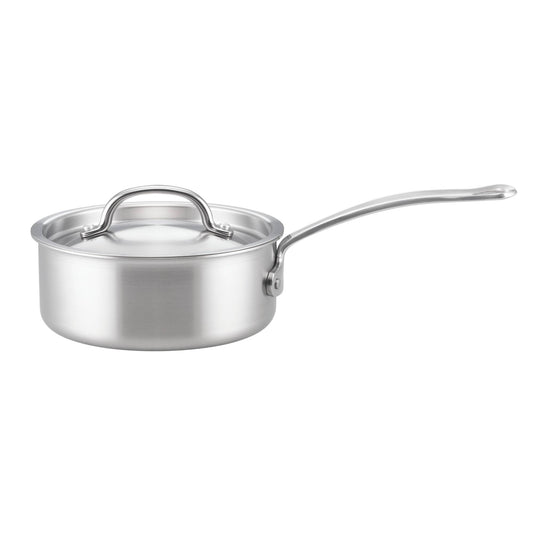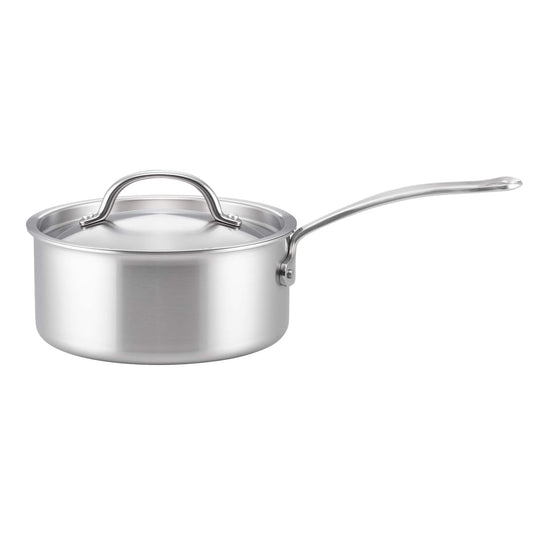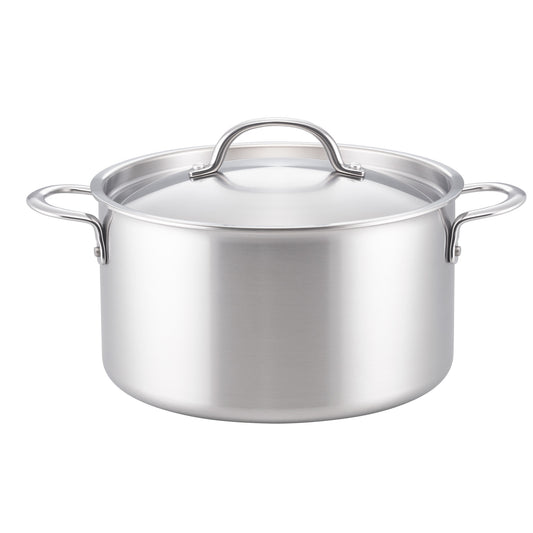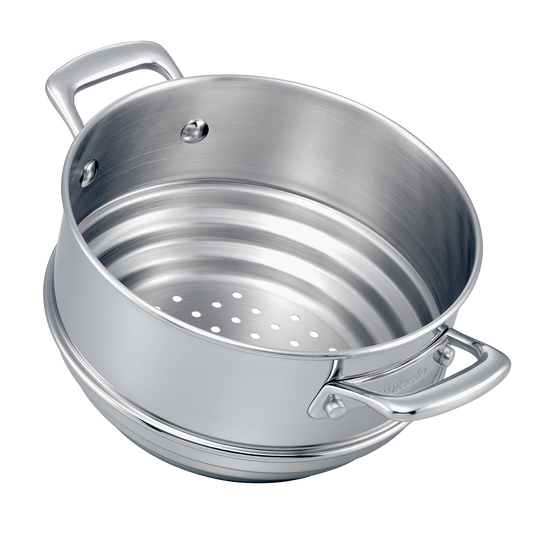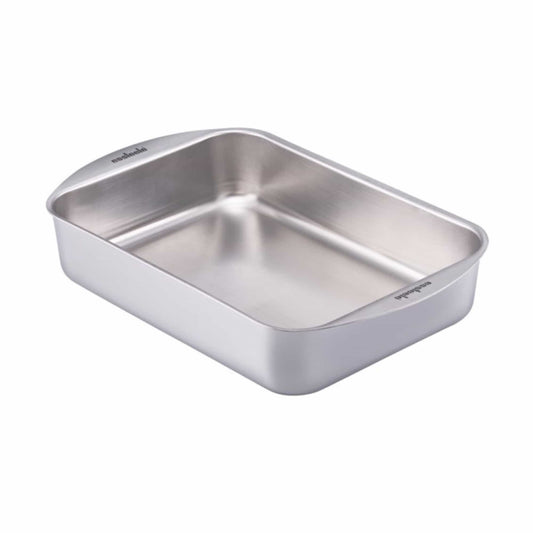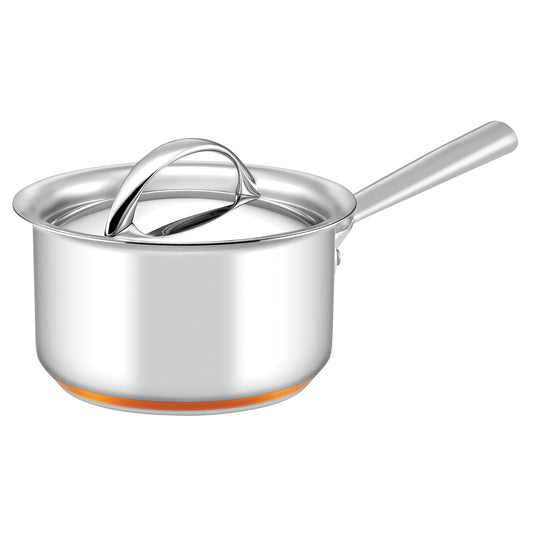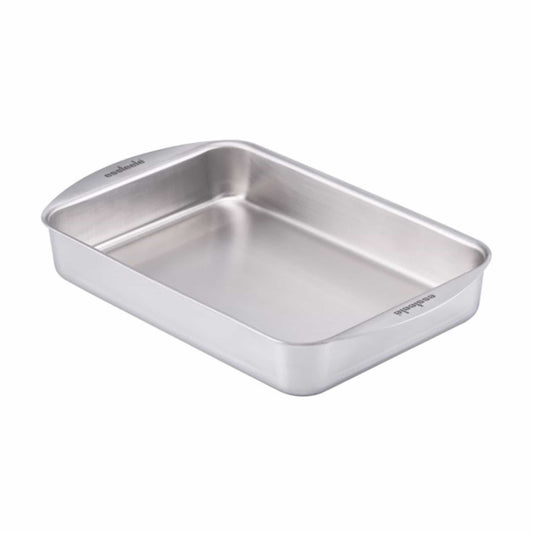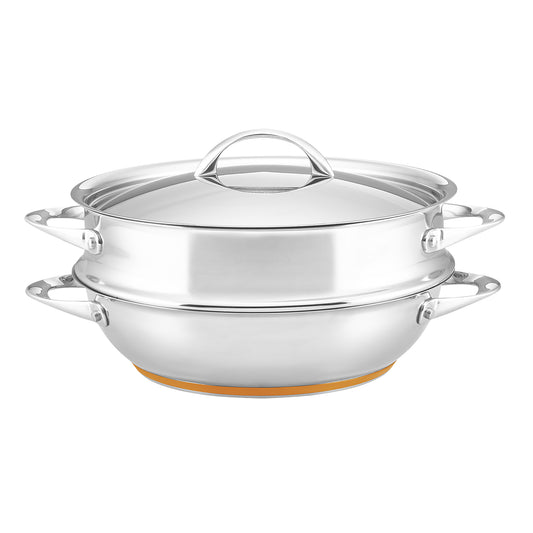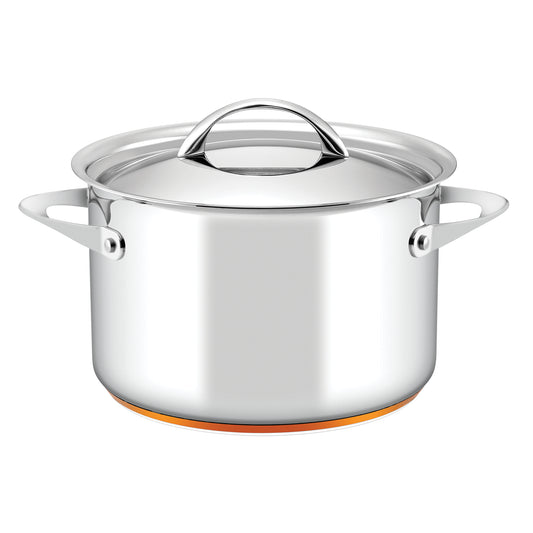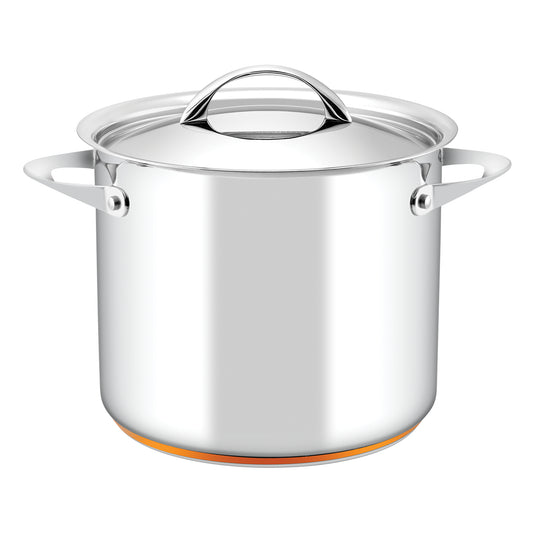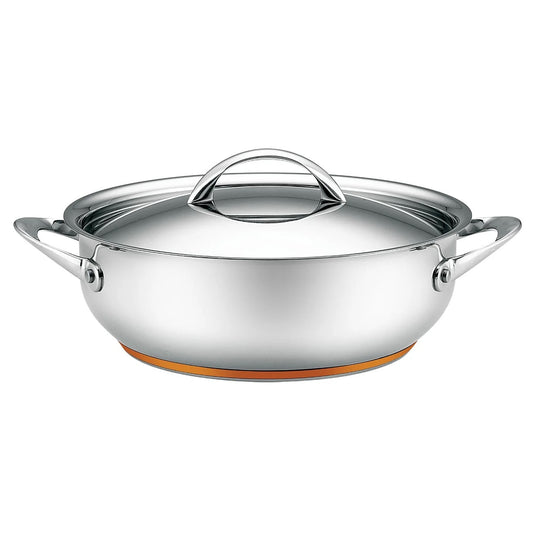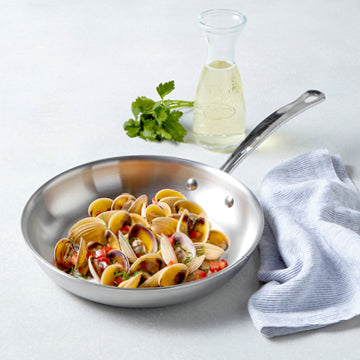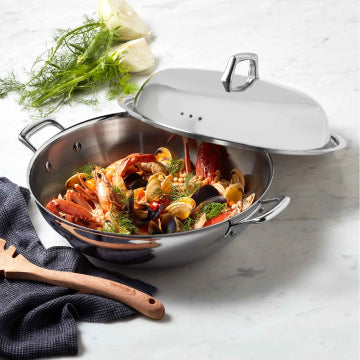-
Electric Gas Induction
Essteele Per Amore Clad Stainless Steel Induction 4 Piece Cookware Set
Regular price $399.95Regular priceUnit price perRRP $829.95Sale price $399.9552% OffSale -
Electric Gas Induction
Essteele Per Vita Copper Base Stainless Steel Induction Covered Saucepan 14cm/1.2L
Regular price $139.95Regular priceUnit price perRRP $199.95Sale price $139.9530% Off -
Electric Gas Induction
Essteele Per Sempre Clad Stainless Steel Induction Covered Saucepan 14cm/0.9L
Regular price $99.95Regular priceUnit price perRRP $209.95Sale price $99.9552% OffSale -
Electric Gas Induction
Essteele Per Sempre Clad Stainless Steel Induction Covered Saucepan 16cm/1.8L
Regular price $119.95Regular priceUnit price perRRP $239.95Sale price $119.9550% OffSale -
Electric Gas Induction
Essteele Clad Ovenware Stainless Steel Medium Roasting Pan 25cm x 17.5cm x 5.5cm
Regular price $124.95Regular priceUnit price perRRP $179.95Sale price $124.9531% Off -
Electric Gas Induction
Essteele Per Velocita Stainless Steel Pressure Cooker 22cm/6L
Regular price $419.95Regular priceUnit price perRRP $599.95Sale price $419.9530% Off -
Electric Gas Induction
Essteele Per Velocita Stainless Steel Pressure Cooker 22cm/4.5L
Regular price $389.95Regular priceUnit price perRRP $559.95Sale price $389.9530% Off -
Electric Gas Induction
Essteele Clad Ovenware Stainless Steel Square Roasting Pan 20.5cm x 20.5cm x 5cm
Regular price $109.95Regular priceUnit price perRRP $159.95Sale price $109.9531% Off -
Electric Gas Induction
Essteele Per Amore Clad Stainless Steel Induction Covered Saucepan 16cm/1.4L
Regular price $137.95Regular priceUnit price perRRP $229.95Sale price $137.9540% OffSale -
Electric Gas Induction
Essteele Per Amore Clad Stainless Steel Induction Covered Saucepan 18cm/1.9L
Regular price $149.95Regular priceUnit price perRRP $249.95Sale price $149.9540% OffSale -
Electric Gas Induction
Essteele Per Amore Clad Stainless Steel Induction Covered Saucepan 20cm/2.8L
Regular price $167.95Regular priceUnit price perRRP $279.95Sale price $167.9540% OffSale -
Electric Gas Induction
Essteele Per Amore Clad Stainless Steel Induction Covered Stockpot 26cm/7.6L
Regular price $239.95Regular priceUnit price perRRP $399.95Sale price $239.9540% OffSale -
Essteele Stainless Steel Universal Steamer Insert 16/18/20cm
Regular price $69.95Regular priceUnit price perRRP $99.95Sale price $69.9530% Off -
Electric Gas Induction
Essteele Clad Ovenware Stainless Steel Large Rectangular Roasting Pan 37cm x 27cm x 8cm
Regular price $229.95Regular priceUnit price perRRP $329.95Sale price $229.9530% Off -
Electric Gas Induction
Essteele Per Vita Copper Base Stainless Steel Induction Covered Saucepan 16cm/1.9L
Regular price $154.95Regular priceUnit price perRRP $219.95Sale price $154.9530% Off -
Electric Gas Induction
Essteele Clad Ovenware Stainless Steel Rectangular Roasting Pan 33cm x 23cm x 5.5cm
Regular price $139.95Regular priceUnit price perRRP $199.95Sale price $139.9530% Off -
Electric Gas Induction
Essteele Per Vita Copper Base Stainless Steel Induction Covered Multicooker With Steamer Insert 30cm/4.7L
Regular price $314.95Regular priceUnit price perRRP $449.95Sale price $314.9530% Off -
Electric Gas Induction
Essteele Per Vita Copper Base Stainless Steel Induction Covered Stockpot 24cm/7.1L
Regular price $229.95Regular priceUnit price perRRP $329.95Sale price $229.9530% Off -
Electric Gas Induction
Essteele Per Vita Copper Base Stainless Steel Induction Covered Stockpot 24cm/9.0L
Regular price $259.95Regular priceUnit price perRRP $369.95Sale price $259.9530% Off -
Electric Gas Induction
Essteele Per Vita Copper Base Stainless Steel Induction Covered Sautéuse 28cm/5.2L
Regular price $229.95Regular priceUnit price perRRP $329.95Sale price $229.9530% OffSale
FAQs
My stainless steel pan is sticking, what do I do?
If your stainless-steel pan is sticking, this usually is caused by the way you use and cook with your pan. There are several things you can do to prevent this in the future.
1. Proper Preheating
- Properly preheat your pan: Before adding oil or food, preheat the pan on medium heat for a few minutes. You can test if the pan is hot enough by sprinkling a few drops of water on the surface. If the water forms beads and skates around, the pan is ready.
2. Use Enough Oil
- Add oil after preheating: Once the pan is heated, add oil or butter. Swirl it around to coat the surface evenly. Let the oil heat up until it starts shimmering, which indicates it's hot enough to create a non-stick surface.
3. Proper Cooking Techniques
- Avoid overcrowding: Don't overcrowd the pan with too much food at once, as this can lower the temperature and cause sticking.
- Don't move the food too soon: Allow the food to cook undisturbed for a few minutes before flipping or stirring. Food will naturally release from the pan when it's properly seared.
4. Cleaning Tips
- Avoid harsh scrubbing: After use, clean the pan with warm water and a sponge or soft brush. Avoid harsh abrasives that can damage the surface.
- Use vinegar and baking soda: If food is stuck on, try deglazing the pan with a bit of vinegar or simmering water and then scraping with a wooden spoon. Baking soda can also be used as a gentle abrasive.
- Clean your pan with Essteele powder cleaner
By following these steps, your stainless-steel pan should perform better and be less prone to sticking in the future.
Can my pan go on induction?
Yes, all Essteele cookware (except the grill pans), and all stainless pans are induction suitable. This means that the cookware is specifically designed to work with induction cooktops. Induction cooking uses electromagnetic fields to directly heat the cookware, rather than using a traditional gas flame or electric heating element. For cookware to be induction suitable, it must have certain properties:
- Magnetic Base: The most critical requirement is that the cookware must have a base made of a ferromagnetic material, such as cast iron or certain types of stainless steel. If a magnet sticks to the bottom of the cookware, it is likely to be induction compatible.
- Flat Bottom: The bottom of the cookware should be flat to ensure good contact with the induction cooktop. This maximizes the efficiency of heat transfer.
What is warping?
Warping in cookware refers to the deformation or bending of the cooking surface, typically caused by uneven heating or rapid temperature changes. Here are some key points about warping:
- Uneven Heating: If a pan heats unevenly, different parts expand at different rates, causing the metal to warp.
- Thermal Shock: Rapid temperature changes, such as placing a hot pan under cold water, can cause warping. The sudden contraction of the metal from cooling can lead to deformation.
- Visible Signs: Warping often results in a visibly distorted or wavy surface. The pan may no longer sit flat on the stovetop, causing uneven cooking.
- Impact on Cooking: A warped pan can lead to uneven cooking, with hotspots that may burn food while other areas remain undercooked. It can also make it difficult to keep oil or liquid evenly distributed across the surface.
- Prevention: To prevent warping, heat the pan gradually and avoid sudden temperature changes. Using high-quality, thicker cookware can also reduce the risk of warping.
Understanding these points can help maintain the integrity of your cookware and ensure more consistent cooking results.
What is deglazing?
Deglazing is a cooking technique in which a liquid (such as wine, broth, or water) is added to a hot pan after food has been sautéed, seared, or roasted. The purpose is to dissolve and lift the flavourful browned bits (called "fond") that are left on the bottom of the pan. These browned bits contain concentrated flavours from the food and contribute to making rich sauces or gravies.

